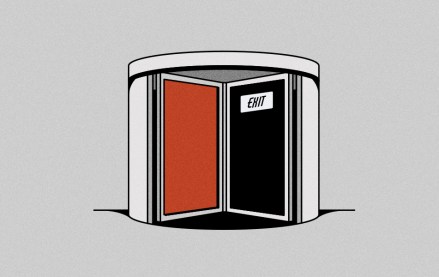Marketing Briefing: Is the early ad rollout to blame for a lackluster Super Bowl?

This Future of Marketing Briefing covers the latest in marketing for Digiday+ members and is distributed over email every Friday at 10 a.m. ET. More from the series →
For marketers, the stakes of the Super Bowl are clear. It’s the one night of the year when people eagerly await the advertising with high expectations. It should be the venue where marketers find a grand or silly or audacious or inspiring — or whatever adjective fits — way to say the thing that they want to say to people and make the (at least) $8 million media spend worth it.
But those very stakes and the need to make the outsized spend worth it may be working against marketers’ better instincts, as they are desperate to create something that will appeal to everyone, but may ultimately appeal to no one. This year, marketers have been taking a more light-hearted approach to advertising around the Big Game, leaning on comedy and celebrities, recognizing that it’s a more delicate environment given the fractured nature of the country.
It doesn’t help that the rollout for Super Bowl ads has gotten earlier with some teasers starting a month out whereas it used to be the week leading up with asks to create even more assets — the Big Game spot, the teaser for the spot and, in some cases, the teaser for the teaser, to say nothing of the many social assets.
“There used to be this world where everyone was super excited to see the ads at the Super Bowl,” said Ashwinn Krishnaswamy, partner at brand design firm Forge, adding that the pre-release ecosystem has changed consumers’ anticipation of Big Game spots. “Now, every brand is trying to de-risk how much money they’ve spent so they’re like, ‘let’s post it on social [media], let’s get influencers and creators involved to amplify the message.’”
Without the element of surprise or notable storytelling, much of the Super Bowl advertising won’t be remembered long after Sunday’s airing, explained five marketers, consultants and agency execs. Especially since consumers know what to expect from this “Super Bowl formula,” noted Rob Schwartz, executive coach and former CEO of TBWA\Worldwide.
That’s not to say that the Super Bowl is a bust — the rare mass media moment with dedicated eyeballs continues to make it appealing — but it’s ripe for reinvention, explained Schwartz, adding that fewer pre-released spots and more ads that break conventions could help. Think Reddit’s 2021, 5-second spot that featured the company’s logo in a broadcast screen message that was so quick you’d blink and miss it. Or Coinbase’s spot from 2022 that had a QR code bounce around the screen akin to a DVD screensaver. Or last year’s Michael Cera ad from CeRave that used paparazzi photos of Cera with tons of the skincare brand’s products to get people wondering what the heck was going on.
Sources for this story cited those examples as disruptors that were missing from this year’s game.
“Brands pre release because it’s a way to build impressions and make sure that you’re reaching more and more people,” said Tom Murphy, chief creative officer at VML. “But have we lost a little bit of the value of surprise?”
That element of surprise may be more important than brands think. Nike, for example, was back after 27 years away with a spot focused on winning and women’s sports; the spot, “So Win,” by Wieden+Kennedy in Portland won the Super Clio. “I don’t know if other brands will take notes on it but it is something they should be paying attention to. Stop trying to be viral for the sake of being viral. Tell a story, have a great moment about it and let it do what it does,” said Ty Gates, communication director at Mother.
That might be something another hit of the night took to heart. Anheuser-Busch stayed true to form with the Clydesdales, earning the brand the top spot in the USA Today Ad Meter, which annually has panelists rank the best ads of the night.
“It comes down to what your objective is but there is a wind blowing in the other direction [back to] the element of surprise, not giving it away,” said Nick Miaritis, chief client officer at VaynerMedia. “It makes the overall advertising experience more special.”
Ultimately, we’re in an era where marketing is all about staking a claim in culture. Brands are fighting for relevance in an ever-more chaotic and fragmented media landscape. The return of big, confident brand moments like that of Nike and Budweiser could be a signal that there’s a pivot away from relying on hyper-rational performance marketing to include more emotional, entertainment-driven, coming to more balance between the two.
Other Super Bowl trends:
It wasn’t the AI Bowl.
Seven of the 57 spots touched on AI; ChatGPT’s first appearance seemed to focus on AI’s supposed importance in history whereas the other AI spots from Google, Salesforce, Meta and Ray Ban as well as GoDaddy focused on use cases. Unlike the Crypto Bowl of 2022, the AI ads didn’t become an overriding theme of the night, according to agency execs and marketers. “It was kind of a grab bag,” said Murphy, chief creative officer at VML, when asked about the theme of the night.
Influencer work wasn’t a shortcut to success.
One brand, soda alternative Poppi, was criticized online for sending vending machines to a select group of influencers. “When brands default to ‘bigger and more expensive’ without considering the broader story they’re telling, they risk turning their marketing moment into a cautionary tale.” said Grace Murray Vazquez, vp of strategy at influencer marketing shop Fohr.
3 Questions with Dan Kenger, chief design officer of direct-to-consumer health brand Hims & Hers
Hims & Hers is more than a weight loss company but you used the Super Bowl to tout a weight loss drug. Why?
We really wanted to use this opportunity to say something. We have 60 seconds on the national stage and we felt it was important [to] bring awareness to the obesity epidemic. That’s really what we’re trying to do. A lot of the Super Bowl [ads] use celebrity, humor and they try to put their value props in some sort of shtick. Frankly we thought about doing that and we felt it wasn’t really the best use nor was it compelling to really tell this story. [We wanted to] educate people of the system and show how hard it is.
Culturally, are we more accepting of talking about weight loss or using a medication for weight loss in an ad than we were a few years ago?
We’re dealing with a stigmatized issue — the way that things become not stigmatized is you talk about them a lot. You mention the word a lot, and then all of a sudden after years of that you’re like, “Oh, that’s not a big deal.”… We’re trying to be another wave flagger in trying to destigmatize the conversation.
It’s a strange time for pharmaceutical advertising. With Robert Kennedy Jr. headed to HHS, that could change the pharmaceutical advertising landscape. Did you think about that as you were making this Super Bowl spot?
We didn’t think about it from that lens, per se. The lens that we thought about it was that, make America healthy is a cultural movement that I think a lot of people on both sides of the aisle could get behind. That sentence has a lot of pillars to it. It’s the food industry, it’s the healthcare industry, and I think we see ourselves as a way to really help with one of those pillars. We wanted everyone to [know] the values of our company, what we offer and where things are made. [We recognized the opportunity of using] the national stage while we have everyone’s attention.
By the numbers
For more than a year now, performance marketers retooled their marketing efforts to strike a better balance between the short-term ROIs and long-term brand building. The digital marketplace is getting more crowded, making it more difficult for brands to stand out and foster community enough to create repeat customers. A recent study from WARC finds that an over investment in performance marketing can come at the expense of the branding, creating a so-called doom loop of wasted ad spend, failing returns and more. More from the study from WARC in partnership with Analytic Partners, BERA.ai, Prophet and System1 below:
- Overinvesting in performance advertising reduces median revenue by 40%
- Shifting to a combined performance and brand approach increases median revenue by 90%
- Search investment will vary by brand and category, but, for most brands, spending more than 25% of budgets on search should be a red flag. The study calls this the “search ceiling.” — Kimeko McCoy
Quote of the week
“If it’s true what [Maurice] Levy and [Arthur] Sadoun said — that they weren’t interested [in IPG] — then [IPG CEO Philippe] Krakowsky caught Wren with his trousers down.”
— S4 Capital CEO Martin Sorrell at the Ad Tech Economic Forum in London last week where he showed skepticism about the cost of IPG.
What we’ve covered
- Amazon, Google and verification vendors among ad tech cohort under fire from U.S. senators over child safety shortcomings
- How brands are growing episodic creator partnerships to reach a younger audience
- Kicked off by the Super Bowl, irreverent bro humor and sex appeal-based marketing is officially making a comeback
More in Marketing

Pitch deck: How Amazon is recasting Twitch as a core part of its CTV pitch
Amazon is positioning Twitch as a defining asset in its CTV ambitions.

Netflix transforms former mall department stores into experiential venues
The location in Dallas opens this week, and one at the King of Prussia mall near Philadelphia opened last month.

Future of Marketing Briefing: AI has created a new talent paradox in programmatic agencies
The job isn’t execution anymore. AI handles that. The job is judgement.








